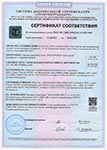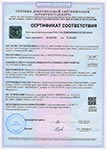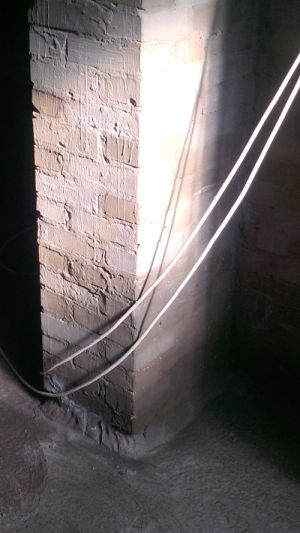Waterproofing brickwork
The OOO Aquatron-BKhK сompany offers modern and effective compounds for waterproofing brick. They are based on Portland cement and sand with special modified components added. This allows the mixtures to penetrate deeply into the structure of the brick overlay, filling all pores and cracks, following which strong hydrophobic crystals are formed. As a result of applying the Aquatron series of materials, not only is complete water resistance of the structure guaranteed, but its strength and resistance to freezing are also increased.
The particulars of waterproofing brickwork
One of the inadequacies of brick is its tendency to absorb moisture. Water penetrating brickwork can work its way upward along it to a rather great height, all the way to upper floors. This penetration brings with it a serious threat to the strength of the entire structure and also allows the development of various microorganisms, such as mold and lichens.
To protect a structure against the destructive effect of moisture, the brickwork must be waterproofed. That can be done in various ways, depending on the particulars of climate, groundwater level, the location of the brickwork, and other factors. Based on the conclusions of specialists and customer demand, among the most convenient, beneficial, and effective methods for protecting brickwork against water are the penetrating compounds from Aquatron.
Sequenceofoperations for waterproofing brick:
- Make sure that the structure has not lost weight-bearing ability. If this has happened, first perform necessary repairs to restore this ability.
- Then carefully clean the walls and floor, and treat cracks to a cross-section of at least 20 × 30 mm.
- The joint between floor and walls must also be treated with a cross-section of 70 × 100 mm, and the brickwork seams to a depth of at least 10 mm.
- Cracks and brickwork seams must be filled with the hard compound Aquatron‑6, done by vibropacking. The seams between floor and walls are sealed with asbestos cord that has also been wetted with the penetrating material.
- Cut notches into the surface of the wall at intervals of about 150 × 150 mm and to a depth of 2 to 3 mm.
- In order to improve adhesion of the brick waterproofing mixture to the surface to be protected, a primer coat should be applied.
- If necessary, smooth the surface with a cement-sand solution (1:3) with the Aquatron‑6 waterproofing mixture added, in the ratio of 60 kg of mixture to 1 m³ of solution.
- The penetrating compound must then be applied in two layers at the ratio of 3 to 5 kg/m².
- For additional waterproofing of the brick, drill openings in the brickwork with a diameter of 25 to 30 mm in a checkerboard pattern with an interval of 120 to 150 mm and at an angle of approximately 60°. These holes must be washed, cleaned, and dried; then compact the Aquatron‑6 compound into them with a pressure of 4 to 5 MPa.
When there is significant constant moistness on walls with migration of moisture upward throughout the section:
- Clean the surface of any old coating and destroyed structures, preferably on both sides from the base of the wall to an upper level that is at least 600 mm above the level of moisture migration.
- Drill holes with a diameter of 25 to 30 mm, at an angle of 60 to 70 degrees, and at intervals of 120 to 150 mm in a checkerboard pattern to a depth of 60 to 70% of the thickness of the wall. If there is access to the opposite side of the wall, drill holes with the same specifications.
Note:
1. Before drilling, make sure that the weight-bearing capacity of the wall has a strength reserve of at least 20%.
2. In structures with a reinforcing framework, take the pattern of the framework into consideration, avoiding damaging it when drilling.
3. Wash the drilling debris out of the hole with a strong stream of water.
4. Remove the water from the hole using compressed air.
5. Use a pump for construction solutions to compact the Aquatron‑6 waterproofing mixture into the holes to the full depth.
6. With a vibrorammer or manual tamper, compact the solution in the hole so as to eliminate bubbles. In the event of major damage to the wall, attach an additional reinforcing mesh with cells of 100 × 100 mm to it and with a clearance from the wall of more than 10 mm; smooth it with a cement-sand solution (1:3) or a concrete mixture with the Aquatron‑6 compound added at 3%.
Use of the OOO Aquatron-BKhK сompany’s line of compounds in brickwork waterproofing operations has a large number of advantages. These materials are simple to apply and environmentally clean, and possess good adhesion.




